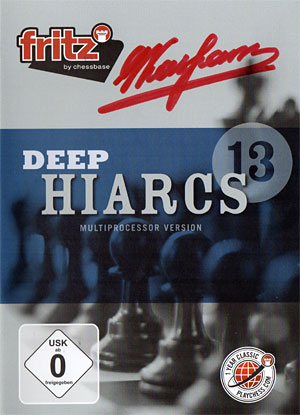January 1, 2016: Proof games, quick mates
By Frederic Friedel
In the tradition of our very first and most famous Christmas Puzzle of 1999 we yesterday revived the proof game genre, asking you to reconstruct the moves of two games that were only defined by their final move: Rook takes e5 mate (find the shortest game) and 7.Ka3 mate (find the moves). A number of people succeeded in working them out – the first one in minutes to half an hour, the second in less than five minutes (Garry Kasparov) to hours to not at all. Typically, our most dedicated test candidate, Nisha Mohota, spent 53 minutes, late at night, and only came up with eight-move solutions for the second problem. The next morning, starting afresh, she found the correct solution in less than half an hour. "I think I took much longer on this problem than I should have," she said, "but then I should really not be too adamant about doing it at the end of the day, when I am tired. Mornings are better, when I am fresh!"
You may want to try one more time to solve the problems:
QM1: Give the shortest possible game that ends in rook takes e5 mate?

[Event "Samara"] [Site "Samara"] [Date "2015.12.29"] [Round "?"] [White "Koblentz/Rachels, Michael/Stuart"] [Black "Shortest game Rxe5#"] [Result "*"] [ECO "A00"] [PlyCount "9"] [EventDate "2002.07.26"] [EventType "swiss"] [EventRounds "9"] [EventCountry "RUS"] 1. Nc3 ({Fishbein’s echo:} 1. h4 e5 2. Nc3 Qxh4 3. Ne4 Qd8 4. Rh5 Ke7 5. Rxe5#) 1... e5 2. a3 Bxa3 3. Ne4 Bf8 4. Ra5 Ke7 5. Rxe5# *
QM2: A game ends with the move 7.Ka3 mate.

[Event "?"] [Site "?"] [Date "2015.12.31"] [Round "?"] [White "Rachels, Stuart"] [Black "Proof game 7.Ka3#"] [Result "*"] [ECO "A00"] [PlyCount "13"] [EventDate "2015.??.??"] 1. d3 f6 2. Kd2 Kf7 3. Kc3 Kg6 4. Kb4 Kh5 5. c3 Kh4 6. Qa4 h5 7. Ka3# *
2016 New Year's prize puzzle
 Here's a chance for you to win a prize that has some historic significance: the chess engine Hiarcs 13 with a signature of the 13th World Champion Garry Kasparov.
Here's a chance for you to win a prize that has some historic significance: the chess engine Hiarcs 13 with a signature of the 13th World Champion Garry Kasparov.
The problem by Stuart Rachels is:
| QM3: A game ends with the move 6...Nf1 mate |
It is a black move that ends the game, and, very importantly, it is not a capture! Our test candidates came up with moves that end in 6...Nxf1 mate, which is fairly easy (but wrong). On the other hand one of the world's leading problem solvers and experts in exactly this kind of puzzle is still, as we write, struggling to find the solution.
If you want to compete with him and with many other solvers, including the aforementioned 13th World Champion, you should send your solution to us using the Feedback and mail to our news service link given at the bottom of the page. Important: give your solution times and tell us briefly how you found the solution. Or did not find it – that too is of interest.
Naturally nobody should post solutions in the Discussion section at the very bottom. Anyone doing that will have their entry immediately deleted and get a slap on the wrist. You may, of course, report your solution time there, notarially certified if you please.
Bonus logical problem
Recently I was in London visiting an old friend, John Nunn. We went to the Natural History and the Science Museum, and John was worried about a rather stupid remark I had made during the visit. So when we got out and were walking towards the underground station he gave me a mental puzzle, to make sure I wasn't "losing it":
There are 36 coins on a table, ten showing heads and the rest tails. They are covered with a cloth. You must reach under the cloth and separate them into two groups, not necessary equal in number, turning over any and as many coins as you like. You cannot feel or in any way tell whether a coin is showing heads or tails. When you are finished and the cloth is removed both groups should show an equal number of heads. How do you do it?
Thankfully I was able to solve the problem before we reached the underground – and John was relieved. A month later I was in Berlin, where Vincent Keymer met Garry Kasparov. The next morning I had breakfast with the ten-year-old chess prodigy and his father, who teaches music at a German university. I gave them John's coin problem and they spent quite a while thinking about it. When we were leaving they hadn't worked it out, so I quickly gave them the solution. Christof Keymer, the father, said: "Wait, I don't get it!?" To which his son, whose face had immediately lit up, said something truly inspiring: "Don't worry, dad, I'll explain it to you on the plane back." Sent shivers down my spine.
Please note: you are NOT supposed to post the solution in the feedback below. Was that not obvious?
Credit: the thumbnail image on our front page is by the Tamil Nadu State Chess Association



















 Here's a chance for you to win a prize that has some historic significance: the chess engine Hiarcs 13 with a signature of the 13th World Champion Garry Kasparov.
Here's a chance for you to win a prize that has some historic significance: the chess engine Hiarcs 13 with a signature of the 13th World Champion Garry Kasparov.




